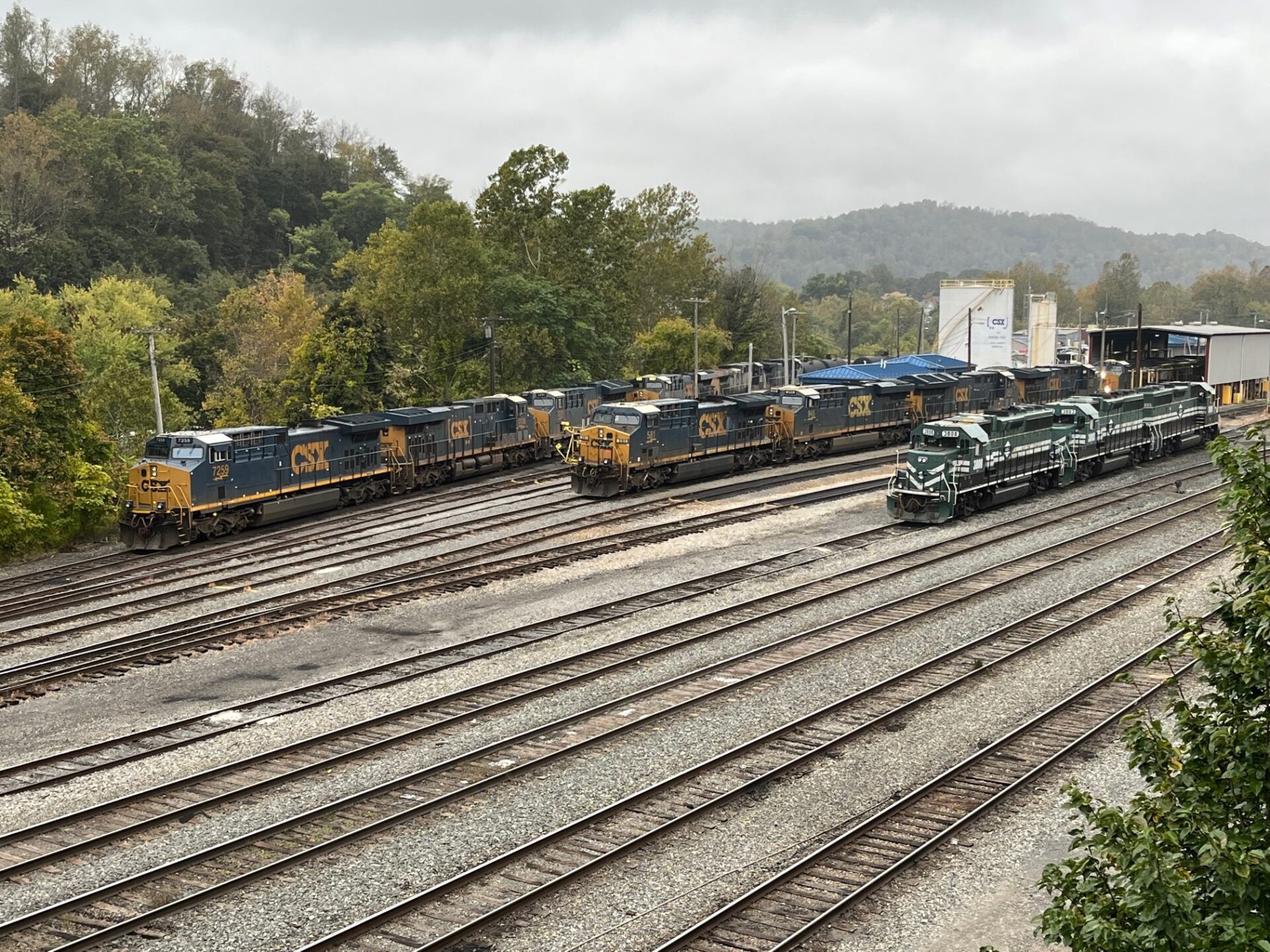Repairs on a rail line are expected to continue until Wednesday after a train derailed in rural Morgan County. No injuries or hazardous material spills were reported.
Updated on Tuesday, Feb. 13 at 4:10 p.m.
CSX and emergency response personnel worked through Monday night to address a derailment near Magnolia, an unincorporated community in Morgan County.
Sheriee Bowman, senior manager of media relations at CSX Transportation, wrote in an updated statement Tuesday afternoon that the derailment involved 10 cars — not nine — and that it impacted two rail lines.
Service was slated to resume Tuesday afternoon on one of these rail lines, Bowman wrote. Repairs on the second line were planned to continue until Wednesday afternoon.
The cause of the incident remains under investigation.
Original Post: Train Derails In Morgan County, No Injuries Reported
A freight train derailed near Magnolia, an unincorporated community in Morgan County, around 4:16 p.m. Monday.
No injuries were reported from the incident, according to a written statement from Sheriee Bowman, senior manager of media relations at CSX Transportation — the company that operates the train.
Bowman wrote that nine cars were involved in the derailment, including one containing dry cement, one containing calcium chloride and four containing sodium hydroxide.
None of the cars containing hazardous materials experienced spillage, she wrote.
In a news release Monday afternoon, Amtrak said that a train traveling from Washington, D.C. to Martinsburg had reversed its course due to the disabled freight train.
Kimberly Woods, senior public relations manager for Amtrak, wrote in an email that Capital Limited trains 29 and 30 remain canceled due to the derailment.
Gov. Jim Justice, the West Virginia Emergency Management Division and the West Virginia Department of Environmental Protection released a joint statement Monday night, which stated that the agencies were directed “to extend necessary resources and assistance” to resolve the derailment.
Emergency personnel at the scene included local and county-level response teams from both West Virginia and Maryland, the joint statement said.
“CSX appreciates the swift response of the local first responders,” Bowman wrote. “The safety of the community and everyone on site is CSX’s top priority as we develop a recovery plan.”
The cause of the incident remains under investigation, Bowman added.
A little more than a year ago, a Norfolk Southern train derailed in East Palestine, Ohio, spilling toxic chemicals, threatening the air and water for local residents.
**Editor’s note: A previous version of this story incorrectly stated that a CSX train derailed in East Palestine over a year ago. It was a Norfolk Southern train that derailed. The story has been updated with the correction.
